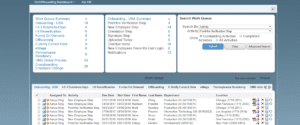The purpose of this article is to explain the fundamental criteria to determine the priority of SuccessFactors incidents which result in increased availability of critical services and efficiency of service delivery. Before we take a deep dive into SuccessFactors incident prioritization, let us understand how the priority of the incidents are categorized based on business impact of the issue.
Very High Priority (P1): The problem has very serious consequences for normal business processes or IT processes related to Organization’s core business processes
High Priority (P2): Organization is going through a business impact however the business can still perform some of its tasks without any issues
Medium Priority (P3): The business impact is least however there is some functionality loss which is adding on to some issues for your organization
Low Priority (P4): The problem has little or no effect on normal business processes
Below process flow explains how the incidents could be categorized prioritized

Note: Before finalizing an incident as P1 check if there is a work around available. If there is one, then incident can be still considered as P2. This applies to the categories; System Availability, Business Process and Test Environment.
With respect to SuccessFactors incidents, business impact is considered very high or high (varies based on time period) if
- Production instance is completely inaccessible and multiple users cannot login
- Major application latency
- Job failures (APM, Connectors, Background Jobs, Reports) impacting multiple users
Below please find the specific examples of the incidents prioritized by business impact for each of the SuccessFactors modules,

Do you have questions?
Connect & Clarify
Like It? Share It

Shyam Reganti
Shyam is a Solution Engineer at 3Core Systems Inc, focused on helping clients with HR and Digital Transformation



